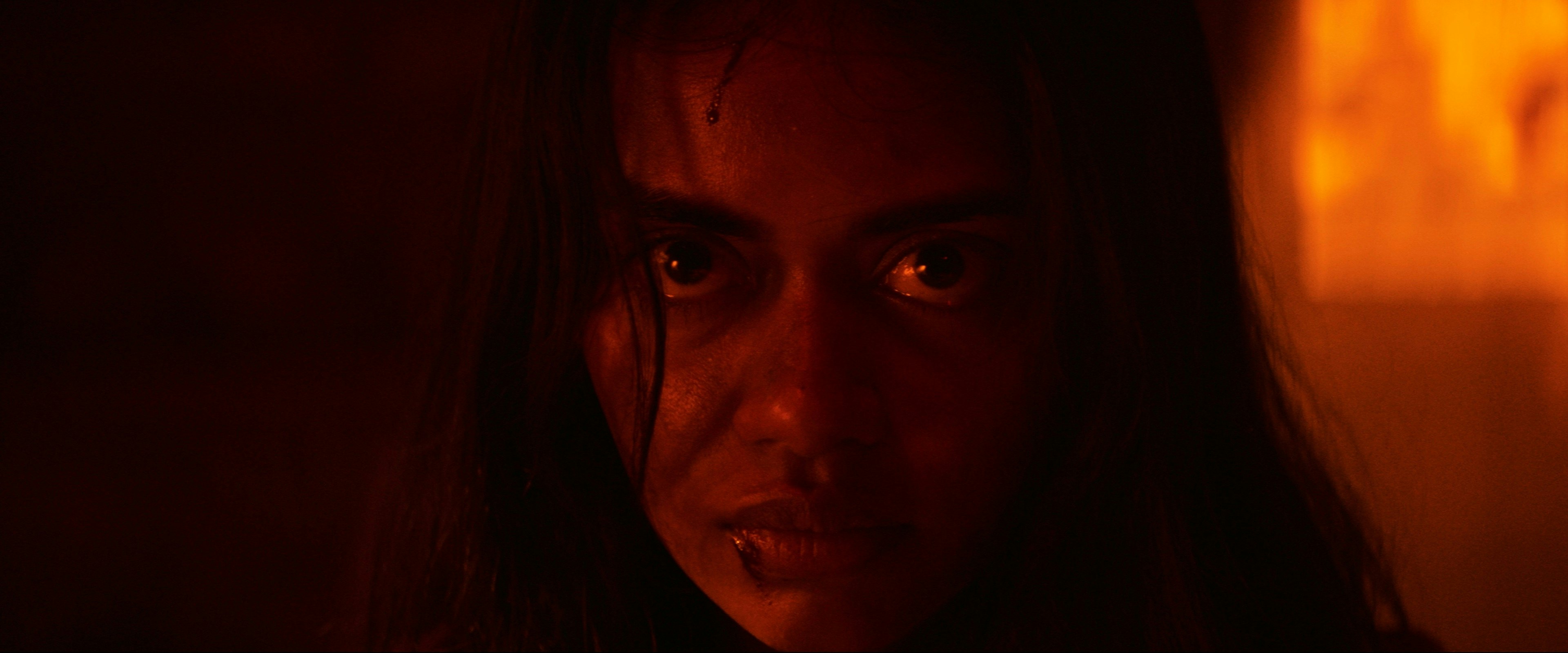
It’s wild for Bishal Dutta’s first film to be spoken about in the same sentences as an all-time horror classic like Get Out. But the It Lives Inside director isn’t letting the hype around his feature debut get to him.
“I’ve certainly been very lucky to be coming at the heels of some of these incredible films, whether it’s Get Out or The Babadook or It Follows or Hereditary,” Dutta tells Inverse.
It Lives Inside debuted at SXSW earlier this year to lots of buzz, much of it coming from the fact that the film is produced by Raymond Mansfield and Sean McKittrick, who produced Jordan Peele’s 2017 breakout horror hit. But It Lives Inside isn’t some Get Out clone. Following the acclaim of his short film Inferno, Dutta met with Mansfield and McKittrick to discuss his idea for a feature, where he was impressed by how much the duo “had their finger on the pulse of this social horror thing.”
“They understood it not as a fad, but as a very, very rich sub-genre of horror,” Dutta says.
So Dutta shared with them his basic idea for the film: “an Indian American teenager going through a friend breakup that unleashes a demon.” That would become the basis for It Lives Inside, which follows Sam (Megan Suri), a teen who rejects her Indian heritage, only for her former best friend to be kidnapped by a demon from Hindu mythology known as the Pishacha.
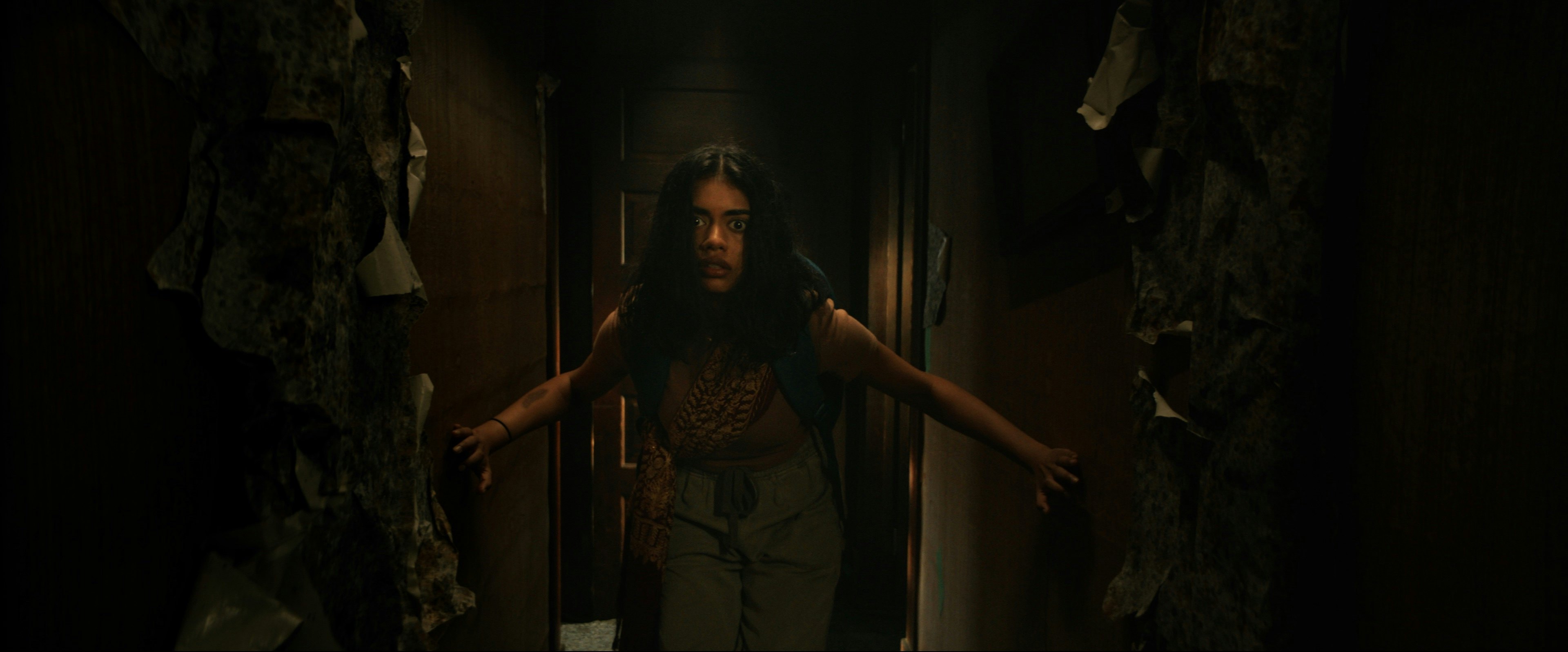
The film received largely positive reviews, and even got Dutta his next gig: an untitled post-apocalyptic horror film produced by James Wan. Dutta wouldn’t share too many details about his next project, but he did praise Wan and his team, and Joshua Rollins’ script. “It’s one of the best scripts that I’ve ever read. I think it’s going to be just as emotional as it is utterly terrifying. So I’m just so excited to make this thing and share it with the world,” Dutta says.
Inverse spoke with Dutta about the cultural origins of It Lives Inside, whether he’d make a sequel, and why he thinks this “social horror thing” is here to stay.
This interview has been edited for clarity and brevity.
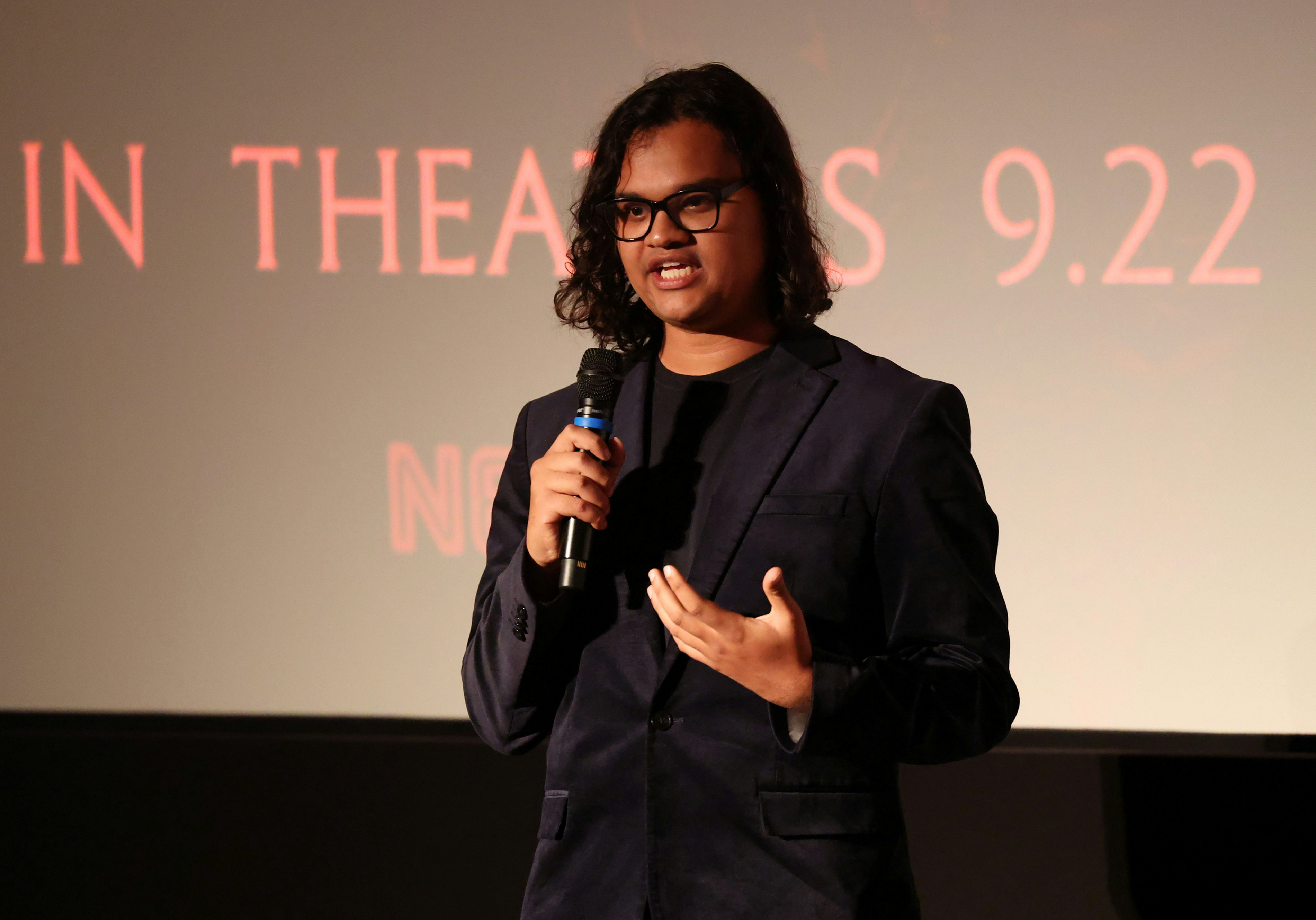
Let’s talk about the inspirations behind It Lives Inside. You’ve spoken about how it’s inspired by your childhood experience of living in India before moving to North America, but it’s also inspired by a story from your grandfather. How are those woven into the movie?
I was also drawing on experiences from family and friends, but I think that when I came here, there was this binary world that I had to live in. And weirdly enough, I still get asked this about the movie, about whether it’s an Indian movie or an American movie. And my answer is always that it’s both. The synthesis that I felt that I was doing of my identity into one cohesive one felt bifurcated, especially in high school. It felt like that was a great conflict for a horror movie. And I hadn’t seen that done really before. And I felt like if I could do that, I think it would really work for an audience as a journey, and it would provide this great foundation for a very scary movie.
And then in terms of my grandfather, this is much more specific. My grandfather used to tell this ghost story about how, as a young man in India, he went to a family friend’s house. The friend had a daughter who had a mason jar she would talk to. One day, he said, “There’s nothing in the jar.” And she got mad at him and she opened the lid and flung something at him. Of course, nothing came out, but my grandfather goes home and really weird stuff starts happening. He leaves a pack of peanuts out one day and he turns around and he hears chewing, and when he looks back, all the peanuts are gone.
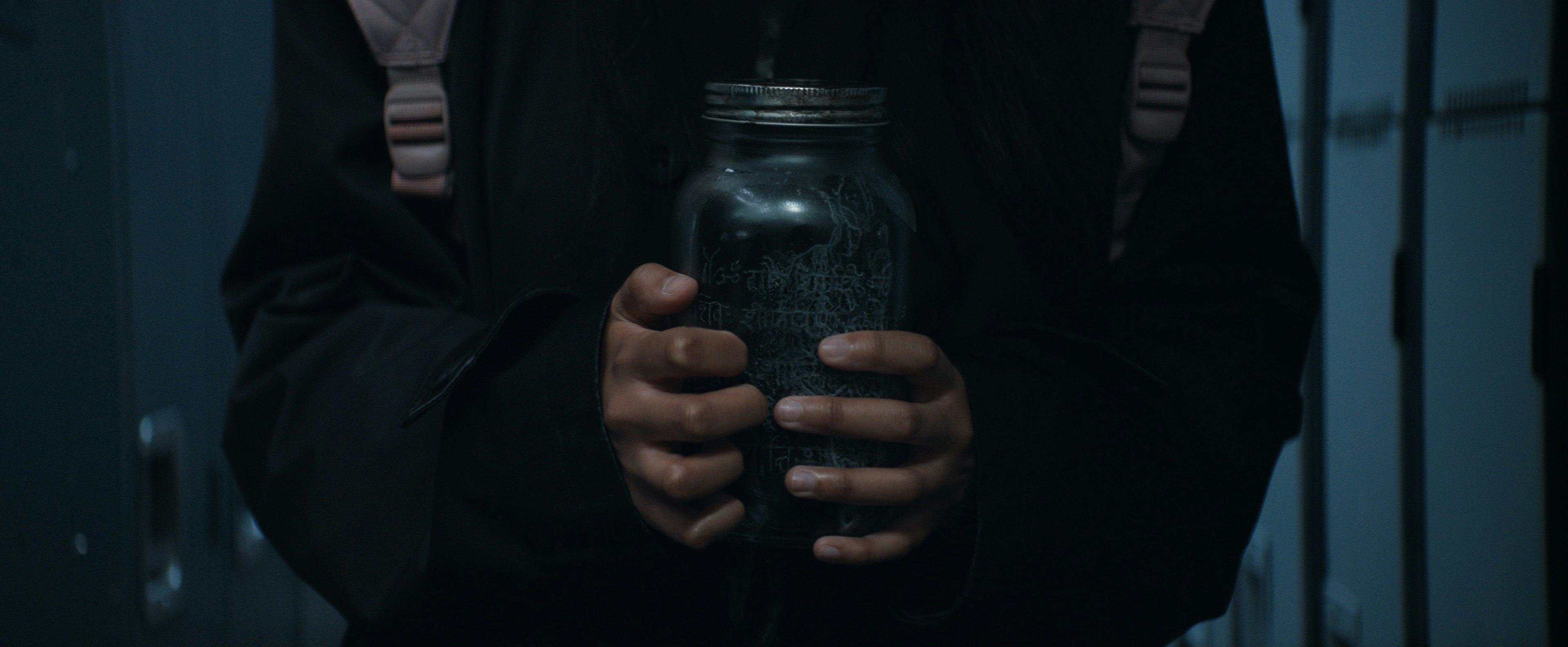
It was a great story that I heard growing up. Obviously, he dipped after that. He just left. But I started thinking about, okay, this kind of story that I grew up hearing, most of us grew up hearing, certainly as immigrants. There’s a real significance to them, and there’s something that lingers about them because they’ve been passed down through generations. I wanted to make a kind of spooky movie that really tapped into what listening to those stories felt like when you were a kid.
Of course, we have to talk about the cultural aspect of the monster, the Pishacha. How did you end up merging it with your grandfather’s story?
A lot of it starts with character. I had a sense of Samidha’s character, and I understood where I felt like she needed to go across the runtime of the movie. And when I was researching about what the antagonist of the movie would be, I encountered so many interesting myths. There’s an incredible untapped well of mythology and demonic mythology, ghostly mythology. But when I found this Pishacha, for me, I was immediately struck by the fact that it is the embodiment of fear.
It’s an uber boogieman sort of thing, in that it feeds on people’s isolation and anger and loneliness and hatred. It felt like the perfect, the ultimate antagonist for the character I had already created. That’s what I love in horror movies is that when you start to go, “Here’s the character, I think the audience will care about this character. I care about this character. What is the worst force that can befall this character? What’s the worst force that this character can come up against?” And so from the beginning for me, what was so interesting was this battle between Sam and this creature.

How did you end up landing on the design for Pishacha? I’m sure they’ve been depicted in many different ways throughout history.
Todd Masters, who is an incredible creature designer, he and I worked together and we started off with the religious imagery, the artwork, and we told ourselves, “Okay, so this artwork, this is an interpretation. This is a creative interpretation of what was essentially a real thing according to the mythology.” So we thought, “How can we take these principles, the teeth, the eyes, the overall structure, how can we take that and put it into what feels like the real world?” We wanted to treat it as realistically as possible. One of the big things for me was designing it to have a malicious presence. I think some of the earlier designs, for example, felt almost a little too animalistic.
There was a version where its eyes were a little more on the side of its head. It felt like a fish or something. But we were pushing the design towards it being this real embodiment of evil. And at the same time, I also got to pay homage to some of my favorite horror films, and especially the practical effects of the ’80s. We talked a lot about Hellraiser. There’s a sequence where the bad guy, Frank, is being reconfigured from the curse and it’s just so gooey and sinewy and disgusting. And I thought a lot about The Fly or Pumpkinhead or The Thing, and there was a real joy for us at getting to make a practical creature that really lived in that space and having a performer within it. She’s a skateboarder, she’s so flexible, and she could do all these crazy movements. So I think the entire process of constructing that monster was just a dream come true.
What went into the decision to make the Pishacha invisible? Was that part of the cultural roots of the spirits, or was that something that was decided for your movie?
That is part of the cultural mythology, very much so. And there’s another component which we didn’t end up exploring too much in this film. It’s interesting how it works out that certain rules are correct for the tone of the movie you’re going for. The invisibility certainly spoke to what made the creature interesting to me, specifically its ability to manipulate people and to get you to isolate yourself by believing in it while nobody else seems to see that it exists. And so that really played into these more psychological components of it. It also is a shapeshifter in the mythology, that didn’t really fit into this movie as much as the invisibility element, but I’d certainly love to keep exploring it.
Perhaps in a sequel of some kind.
One can only hope.
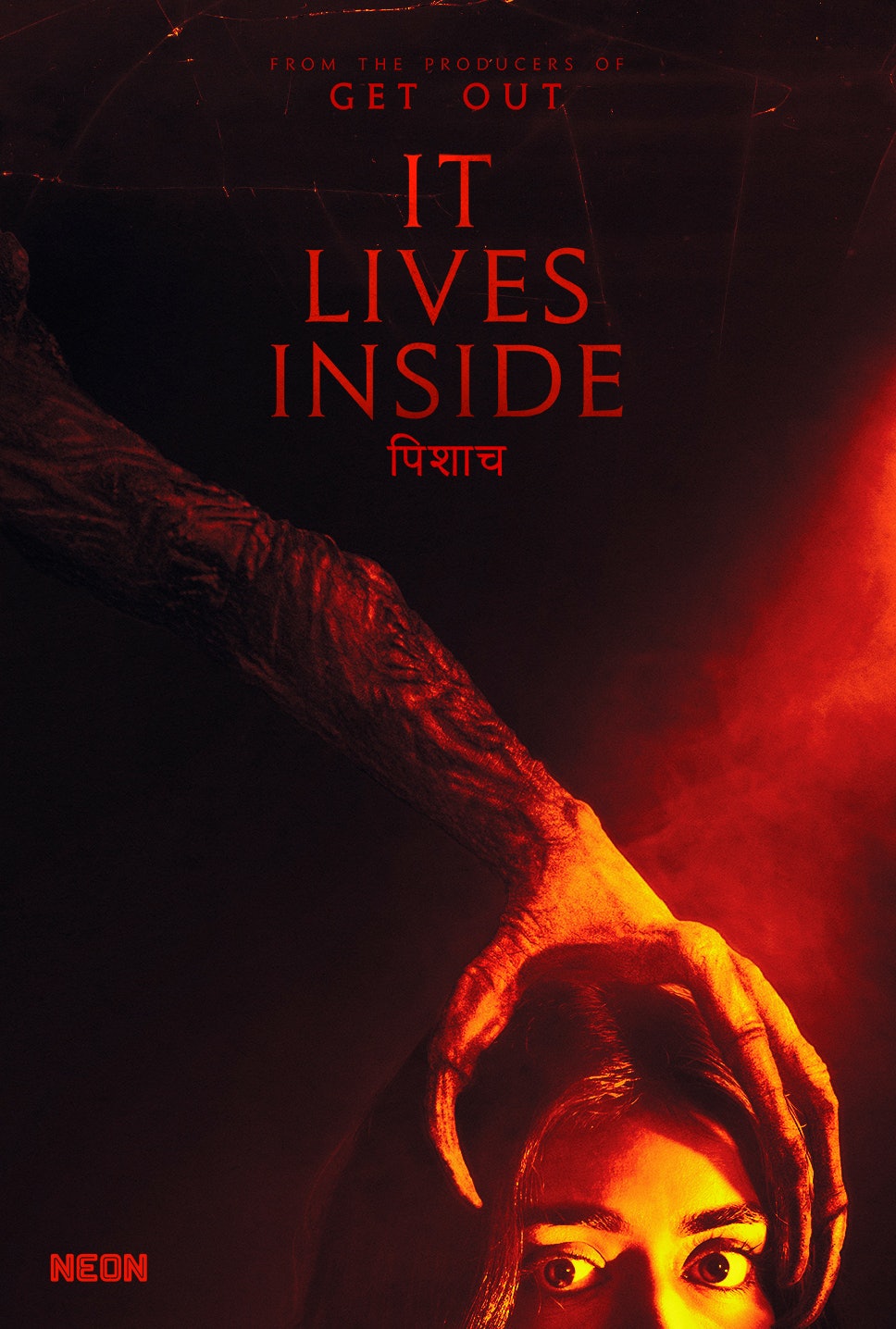
Since the release of Get Out, there’s been a rise in these social thrillers where monsters represent some greater abstract thing, microaggressions, grief, depression, et cetera. With It Lives Inside, would you say there’s a specific reading for what the Pishacha represents?
I wanted it to have that allegorical quality. I wanted it so that if you are watching the film and you want to engage with it on that level you certainly can, but I also didn’t want it to be required reading, and I wanted to make sure that the film functions as a creature feature, as a demon movie, as a physical battle. But then to your point, I think we did constantly try to find ways to make sure that there is an alternate reading that you can watch the film a second time and see more there.
And I think that what has been so incredible about films like Get Out is that they push the conversation beyond the binary world that we used to talk about racism. And this particular film isn’t about racism with the capital R, so much as it is about what is coming from within someone. These discomforts that we have within us, these insecurities that we have in us. I feel privileged to be making movies in a lineage of films that are continuing the conversation and deepening it beyond that capital R racism is bad. I think we have the ability to now have a more nuanced conversation about race in America because of these films.







